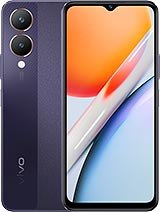
vivo Y28
Discover the powerful and affordable vivo Y28 mobile phone. With a 4.7 display, 8MP main camera, 5MP selfie camera, and long-lasting battery, this device is perfect for capturing your favorite moments. Available in white, get yours today!
Smartphone Specifications and Features Summary:
Announced: 2024, January 07
Status: Available. Released 2024, January 07
Display: 6.56 inches IPS LCD
OS: Android 13
Network: GSM / HSPA / LTE / 5G
Chipset: Mediatek Dimensity 6020
CPU: Octa-core
GPU: Mali-G57 MC2
Memory: 128GB 4GB RAM / 128GB 6GB RAM / 128GB 8GB RAM
Battery: Li-Ion 5000 mAh
Available color(s): Crystal Purple, Glitter Aqua
The Evolution of Smartphone Technology: Introducing the Discontinued vivo Y28
In the ever-evolving world of technology, smartphones have become an integral part of our daily lives. They keep us connected to the world, provide a portal for entertainment and productivity, and are constantly pushing the boundaries of what is possible. The vivo Y28, although no longer available on the market, played a role in this evolution. Let's take a closer look at this device and its features that once made it a standout in the market.Back in 2014, December to be exact, vivo announced and released the Y28. This Android device was considered a mid-range offering at the time, but it still managed to make a name for itself with its impressive specs and features. Fast forward to present day, the Y28 may no longer be officially on the market, but its impact on the smartphone industry is still notable.
The vivo Y28 may no longer be actively marketed, but it's always interesting to take a look back at the specs and features that were once considered cutting-edge. Let's start with the platform: the Y28 runs on Android 4.2.2 (Jelly Bean), which was the latest version at the time of its launch. Powering the device is the Mediatek MT6582 (28 nm) chipset and a quad-core 1.3 GHz Cortex-A7 processor, making it capable of handling most everyday tasks with ease. The device is also equipped with a Mali-400MP2 GPU, ensuring smooth graphics performance.
In terms of memory, the Y28 offers a dedicated microSD slot for expandable storage, along with 8GB of internal storage and 1GB of RAM. While these may not seem like impressive numbers by today's standards, at the time, they were more than enough to satisfy most users' needs.
The Y28's display is a 4.7-inch IPS LCD, with a screen-to-body ratio of approximately 68.1%. It may seem small compared to newer devices, but it was considered a decent screen size back then. The resolution is 540 x 960 pixels, with a 16:10 aspect ratio and a pixel density of 216 ppi. These specs may not be considered high-definition by today's standards, but they were still pretty good for its time.
In terms of design, the Y28 measures 137.4 x 68.6 x 9.8 mm (5.41 x 2.70 x 0.39 in) and weighs 156g. It also features a removable Li-Po 2100 mAh battery, which boasted impressive standby and talk time. The device is also equipped with a micro-SIM slot, which was the norm back in 2014.
Moving on to the camera, the Y28 featured an 8 MP rear camera with autofocus and LED flash. This may not seem like much compared to today's smartphones, but back then, it was considered a good camera for mid-range devices. The device also had a 5 MP front camera, which was more than enough for taking selfies and video calls.
In terms of connectivity, the Y28 supported GSM and HSPA technology, with speeds of up to 21.1/5.76 Mbps. It also had a loudspeaker, a 3.5mm headphone jack, and supported Wi-Fi, Bluetooth, GPS, and FM radio. While the device did not have NFC or an infrared port, it did come with a microUSB 2.0 port for charging and data transfer.
The Y28 also came equipped with various sensors such as an accelerometer, proximity, and compass, making it a well-rounded device in terms of features. It was only available in one color: white, and its model name was simply Y28. The device was priced at around 100 EUR, making it a budget-friendly option for those looking for a reliable mid-range device.
Although the vivo Y28 may no longer be available on the market, it still holds a special place in the constant evolution of smartphone technology. In its time, it offered impressive specs and features that were considered groundbreaking, and it undoubtedly played a role in shaping the devices we have today. Who knows what other advancements we will see in the future of smartphones, but we can always look back on the Y28 as a reminder of how far we've come.
Latest vivo Y28 Specs and Prices
LAUNCH
- Announced: 2024, January 07
- Status: Available. Released 2024, January 07
PLATFORM
- Operating System: Android 13, Funtouch 13
- Chipset: Mediatek Dimensity 6020 (7 nm)
- CPU: Octa-core (2x2.2 GHz Cortex-A76 & 6x2.0 GHz Cortex-A55)
- GPU: Mali-G57 MC2
MEMORY
- Card slot: microSDXC (uses shared SIM slot)
- Internal: 128GB 4GB RAM, 128GB 6GB RAM, 128GB 8GB RAM - UFS 2.2
DISPLAY
- Type: IPS LCD, 90Hz Refresh Rate, 840 nits (HBM)
- Size: 6.56 inches, 103.4 cm2 (~83.8% screen-to-body ratio)
- Resolution: 720 x 1612 pixels, 20:9 ratio (~269 ppi density)
BODY
- Dimensions: 163.7 x 75.4 x 8.1 mm (6.44 x 2.97 x 0.32 in)
- Weight: 186 g (6.56 oz)
- Build: Glass front, plastic frame, plastic back
- SIM: Hybrid Dual SIM (Nano-SIM, dual stand-by) - IP54, water and dust resistant
MAIN CAMERA
- Dual: 50 MP, f/1.8, (wide), PDAF 2 MP, f/2.4, (depth)
- Features: LED flash, panorama
- Video: 1080p@30fps
SELFIE CAMERA
- Single: 8 MP, f/2.0, (wide)
- Video: 1080p@30fps
BATTERY
- Type: Li-Ion 5000 mAh, non-removable
- Charging: 15W wired Reverse wired
CELLPHONE NETWORK
- Technology: GSM / HSPA / LTE / 5G
- 2G bands: GSM 850 / 900 / 1800 / 1900 - - SIM 1 & SIM 2
- 3G bands: HSDPA 850 / 900 / 2100
- 4G bands: 1, 3, 5, 8, 28, 38, 40, 41
- 5G bands: 1, 3, 5, 8, 28, 77, 78 SA/NSA
- Speed: HSPA, LTE, 5G
SOUND
- Loudspeaker : Yes
- 3.5mm jack : Yes
COMMUNICATIONS
- WLAN: Wi-Fi 802.11 a/b/g/n/ac, dual-band
- Bluetooth: 5.1, A2DP, LE
- Positioning: GPS, GALILEO, GLONASS, BDS, QZSS
- NFC: No
- Radio: FM radio
- USB: USB Type-C 2.0, OTG
FEATURES
- Sensors: Fingerprint (side-mounted), accelerometer, proximity, compass
MISCELLANEOUS
- Colors: Crystal Purple, Glitter Aqua
- SAR: 0.98 W/kg (head) & & 0.86 W/kg (body) & &
Disclaimer: Specifications shown may be different from the actual product. We cannot guarantee that the information provided on this page is 100% correct. This content is provided for information purposes only. All information included herein is subject to change without notice.


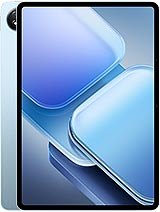
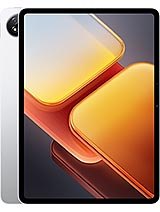
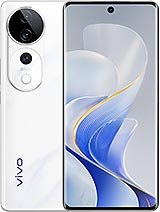

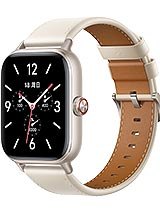

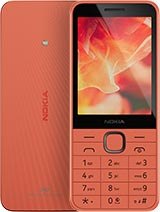


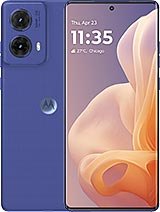

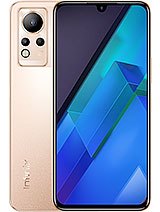

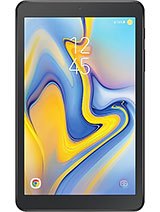

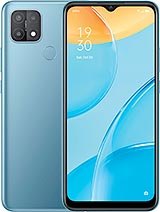
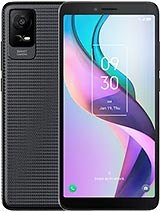
Leave your Opinion here